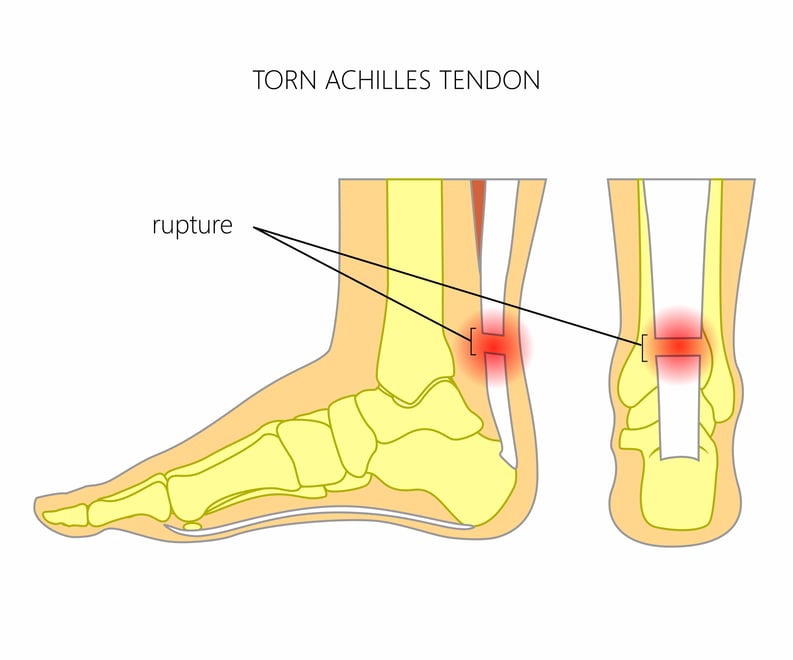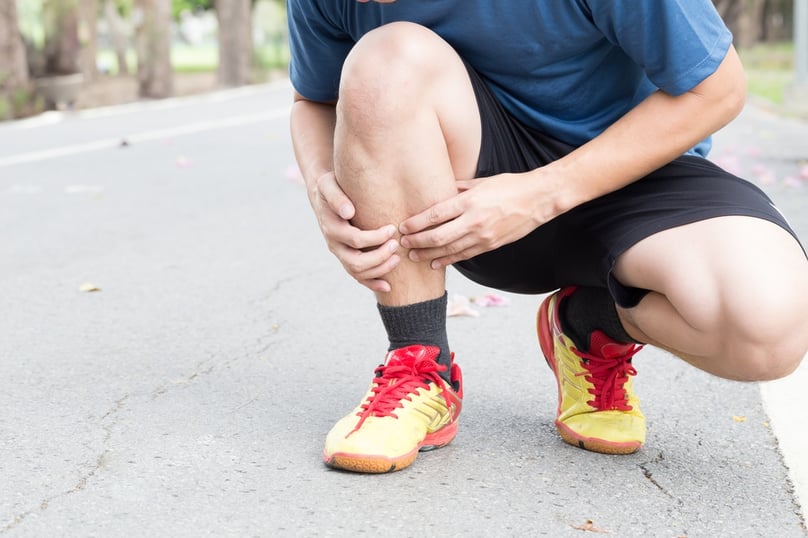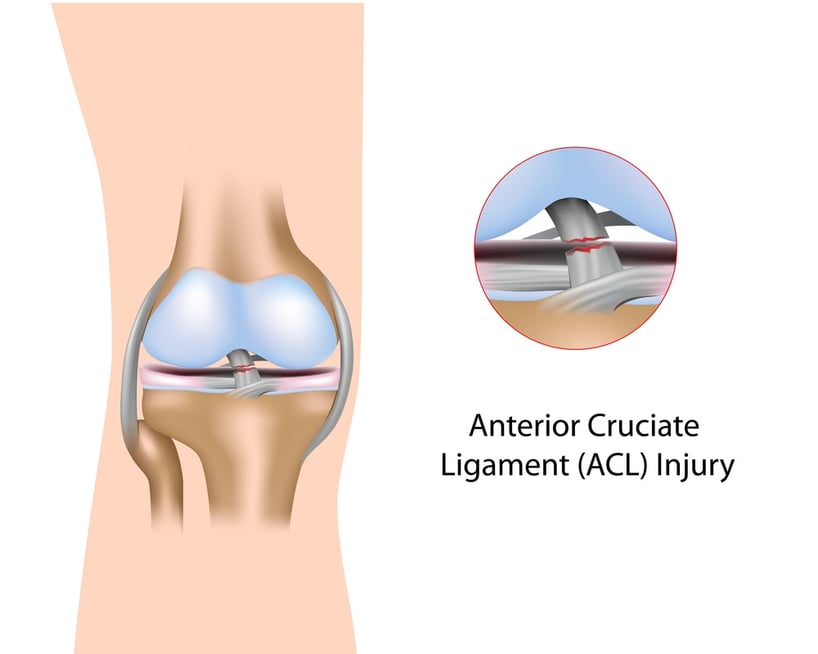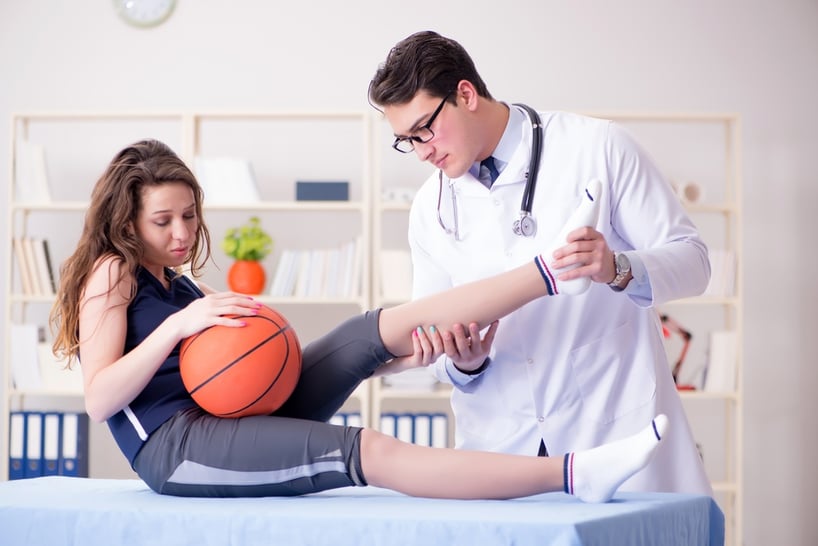10 Common Sports Injury Questions, Answered
December 1st, 2017 | 6 min. read


If you’re a college athlete, high school athlete, or an adult who’s a casual sports participant or weekend warrior, you’ve probably sustained a sports injury at some point in your career. If not, you very likely will have such an injury in the future (hopefully, a minor one).
Sports injuries are widespread in Texas and throughout the United States. Nationally, Americans sustain about 8.6 million athletic injuries per year; approximately 3.5 million of these injuries happen to children and teens.
From football collisions to hockey wipeouts, from playground trip-and-fall injuries to the strain of running marathons, banging up the body while being active is a common problem affecting people of all ages. Below is a sampling of questions about sports injuries that orthopedists and orthopedic surgeons frequently hear.
-
How should I treat a Common sports injury immediately after it happens?
The standard treatment in the minutes following most minor, soft tissue sports injuries (like sprains, strains, and minor tendon tears) is the RICE treatment: Rest, Ice, Compression, and Elevation.
- Rest the affected area for 24 to 48 hours.

- Apply an ice pack wrapped in a towel or cloth for 20 minutes three times per day. You can also alternate between ice and no ice, each for 15 minutes, until the swelling subsides.
- Compress the injury with a bandage for 48 to 72 hours. This can help to reduce swelling, as long as the wrapping isn’t too tight.
- Finally, stack some pillows and elevate the injury to heart level or above. Elevation aids circulation. It helps your blood travel through the injury area and back towards the heart. Elevation also reduces swelling and pain.
To manage pain and swelling, you can also take NSAIDs (over-the-counter pain relievers with anti-inflammatory properties).
If your sports injury is not minor but is an orthopedic emergency—for example, if you believe you have a fracture, a concussion, a torn muscle, or a ruptured tendon—see a doctor as soon as you can. The risks of an untreated injury can be serious.
-
Can I walk on a sprained knee?
Yes—but not right away, and probably not without help. A knee sprain happens when you overstretch or tear a ligament, often the ACL. This injury is common when making sudden movements or when the knee sustains an impact force (for example, from an awkward fall or tackle).
Knee sprains can be mild to moderate and can take anywhere from 8 to 10 weeks to heal fully. Immediately after your injury, your knee may feel very painful when you put weight on it. You should proceed with RICE treatment and NSAIDs as described above to control pain and swelling.
Once the pain and swelling are under control, you can start using heat therapy and rehab exercises to support healing and to strengthen the surrounding muscles. In all likelihood, you won’t feel comfortable putting your full weight on the knee for a while—days to weeks. A stabilizing brace or wrap to support the knee, and a cane or crutch to support your weight, may be necessary to get you up and walking comfortably.
-
Does a torn Achilles tendon hurt?

Yes, always. The Achilles is the thickest tendon in the body and very strong, but its daily use when walking makes it one of the most injury-prone tendons. Athletes often strain, tear, or rupture the Achilles when jumping and running. Non-athletes are likely to hurt their Achilles tendons by twisting (rolling) an ankle or when starting an intense workout without sufficient stretching and conditioning.
No matter how you tear your Achilles tendon, you will feel pain. If the tear is minor, you may have trouble flexing your foot, pointing the toe, or putting weight on the foot. Partial tears can heal on their own with rest and bracing or taping.
With a full Achilles rupture, you may hear a pop and see swelling. In addition to having trouble putting weight on the injured foot, you will not be able to raise your heel (stand on tiptoe). Ruptures are disabling and excruciating and almost always require immobilizing the foot in a cast or having tendon repair surgery.
-
What is a shin splint? How is it different from a stress fracture?

Many people confuse these two injuries, which are very commonly seen in runners and soldiers. (Especially runners of road races, whose feet are repeatedly striking the hard and unforgiving pavement). Though they have some similarities—both are overuse injuries—shin splints and stress fractures are not the same thing.
Shin splints are tiny tears and inflammation in the muscles surrounding the shin bones. They’re commonly seen in runners who train too hard too fast, without gradually ramping up their fitness levels. Shin splints are also common if you have flat feet or wear shoes without sufficient support in the arch. Most of the time, you can treat shin splints at home with some combination of RICE treatment, stretching, and orthotic inserts or new shoes.
Stress fractures affect the shin bones, and require more dedicated rest (and a break from weight-bearing activities) during recovery.
Both conditions are more common in women than men, due in part to the architecture of the legs and feet. Stress fractures are also more likely in women over 30 due to a natural decrease in bone density.
-
How do I know if I’ve torn my ACL?

ACL injuries are fairly common and pretty painful. The rapid lateral movements, pivots, and twisting motions required by sports like basketball, soccer, dance, cheerleading, and skiing can cause a sudden overstretching of the ligament.
If your acute knee pain is accompanied by a loud popping sound, a buckling of the knee (to the point where you cannot put weight on the injured leg), an inability to turn or twist the leg, and swelling of the knee, then you may have an ACL tear or rupture.
For a proper diagnosis, you’ll need to see a knee specialist for an exam and possible imaging tests. Arthroscopic knee surgery may or may not be needed depending on the extent of your injury.
-
How do I treat tendinitis?
Tendinitis is an overuse injury affecting a tendon. It’s usually accompanied by soreness or a burning ache, along with a degree of swelling that may result in restricted range of motion. Some kinds of tendinitis also cause weakness in the affected area (for example, tennis elbow can cause a loss of grip strength).
How you treat your tendinitis depends largely on where it’s located. For example,biceps tendonitis of the arm, if it progresses, can lead to a partial or full rupture. A full tear like this means your biceps muscle is no longer attached to bone at one end. This can result in an unsightly bulge in the arm, along with significant weakness and loss of function.
Most forms of tendinitis can be treated conservatively without surgery, using a combination of approaches: RICE treatment, bracing or taping, physical therapy, and improving or tuning up one’s sports gear. In some cases, additional medication and therapeutic modalities may also help to reduce inflammation. For example, a limited number of cortisone shots can help relieve symptoms. Platelet-rich-plasma therapy and shockwave therapy have also proven helpful for many athletes.
-
How can I tell if I have a concussion?
After hitting your head, if you are experiencing symptoms like headaches, blurred vision, double vision, dizziness, nausea, vomiting, blackouts, memory loss, or a change in your behavior, then you may have a concussion, which is a mild traumatic brain injury—essentially, a bruise on the brain.
The good news: most concussions are minor, and most people will experience a full recovery with enough rest and recovery time. However, serious or repeated concussions, like those sustained playing football or boxing, can lead to more serious symptoms like chronic migraines, amnesia, loss of consciousness, and even death.
If you follow the NFL, you may be familiar with the tragic effects of post-concussive syndrome—brain injuries that can plague athletes a multitude of ways for the rest of their lives.
Concussion is classified as an orthopedic emergency for good reason. When in doubt, visit a doctor after sustaining any head injury.
-
What are the most common shoulder injuries affecting athletes in throwing sports?
In many sports, the shoulders are affected by significant directional forces pulling and pushing at the ball joint and surrounding soft tissue. Baseball pitchers, for example, tend to injure their shoulders often due to the repeated strain of throwing a baseball as hard as possible as often as 300 times a day.
Which shoulder injuries are most commonly seen in throwers?
- SLAP lesion tears (labral tears) and rotator cuff tears are common in athletes who perform repeated over-hand motions. Baseball players, volleyball players, tennis players, and swimmers are frequently affected.
- Sprains and strains of ligaments and muscles are also common, and usually lead to inflammation, stiffness, and soreness.
- Thrower’s Shoulder, a.k.a., swimmer’s shoulder, is a muscle imbalance brought about by repeated, forceful, overhand motions. If some muscles of the shoulder lengthen and others shorten, over time the joint will no longer “glide” properly, resulting in the misalignment of the labrum and rotator cuff.
-
When should I see a doctor for my sports injury?

There are numerous instances where making an appointment to see a physician, orthopedist, or sports medicine practitioner can be helpful or even advisable, to avoid further injury or harm. For example, you’d see a doctor for:
- A fracture (broken bone)
- Concussion
- Dislocations
- Tendon ruptures
- Slipped or ruptured discs in the lower back
- Infection (if the skin over your injury site is very warm or hot, you may have one)
- Swelling that blocks blood flow (are your extremities numb?)
- Re-injury of damaged bone or tissue
- Blood clots
- If your injury causes daily pain and stiffness, inhibits your ability to participate in sports, and has not responded to non-surgical treatments.
If your injury is severe (for example, if you have a compound fracture that has broken the skin, or if you’ve lost consciousness), skip the doctor’s office and go straight to the ER (or call 911).
-
How can I prevent getting injured in the future?
Injury prevention requires taking care and knowing your body and your limits. You can protect yourself by:
- Knowing your risk factors for injury. For example, women and girls are more prone to knee injuries; men and boys are more prone to heart conditions, especially brought on by heat illness.
- Using the right gear. Protective helmets, knee pads, elbow pads, shin guards, the right supportive footwear, shoe inserts if needed, mouthguards, properly strung rackets, the right size bike or golf clubs, hockey gear that fits, clothes that insulate in the cold and shed heat in the hot weather—all of this can help you to reduce your injury risk.
- Training properly. Don’t skip steps. Increase your activity gradually, and always warm up, cool down, and stretch. Take rest breaks between bouts of intense exercise, as well.
- Learning how to move your body safely. Proper form and technique can make all the difference. Many sports medicine centers and orthopedic centers now offer injury prevention clinics to help athletes learn proper posture and better techniques for reducing injury risk.
As always our helpful staff here at Coastal Orthopedics in Corpus Christi, Texas are availabe to anser any of your questions at (361) 994-1166.
Article written by: Rob Williams, MD
Dr. Williams has been practicing orthopedic surgery in Corpus Christi since 1998. After graduating from Texas Tech hereceived his medical degree from the University of Texas at San Antonio. At the prestigious Campbell Clinic located at the University of Tennessee, Dr. Williams completed not only an Orthopedic Surgery Residency, but an additional year of Fellowship Training in Spine Surgery. Dr. Williams is dedicated to creating an excellent patient experience in the office or in the surgery suite.
Topics:

